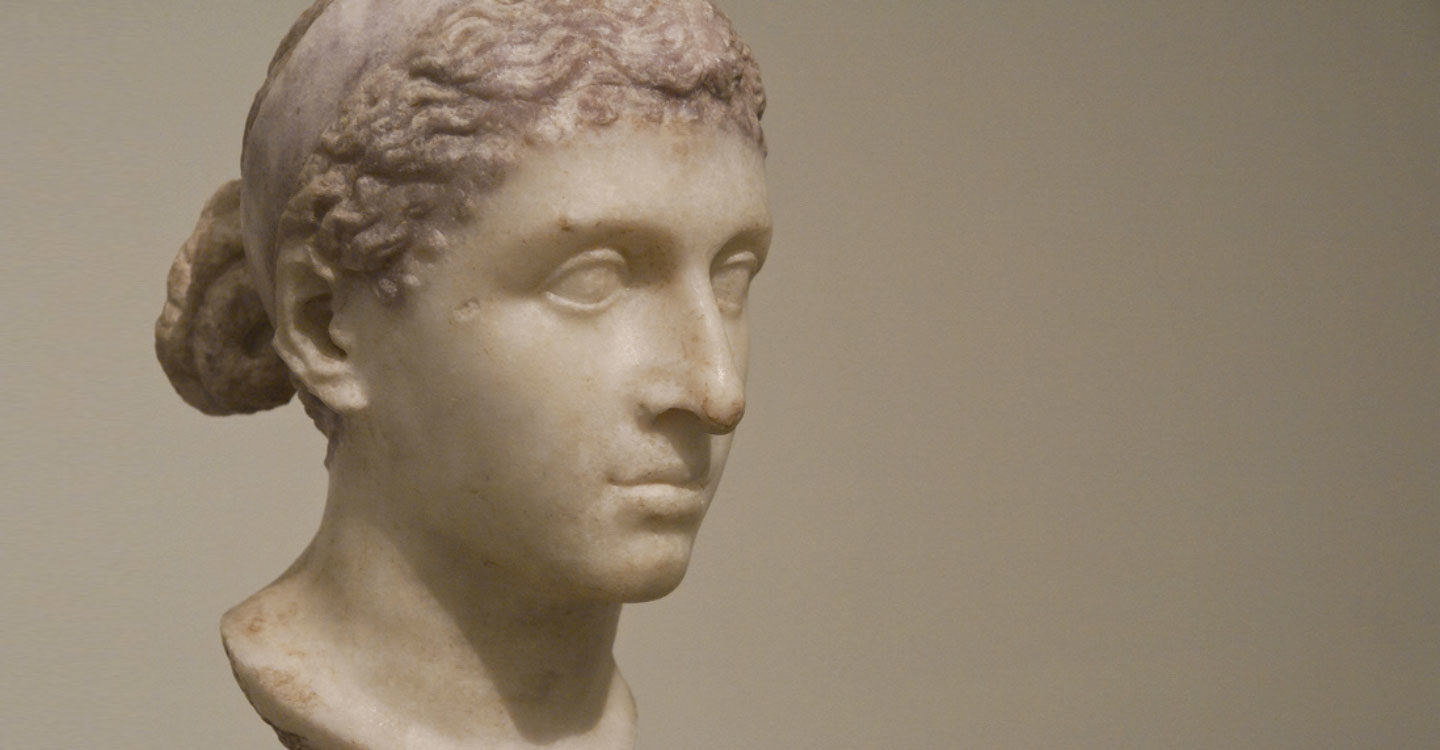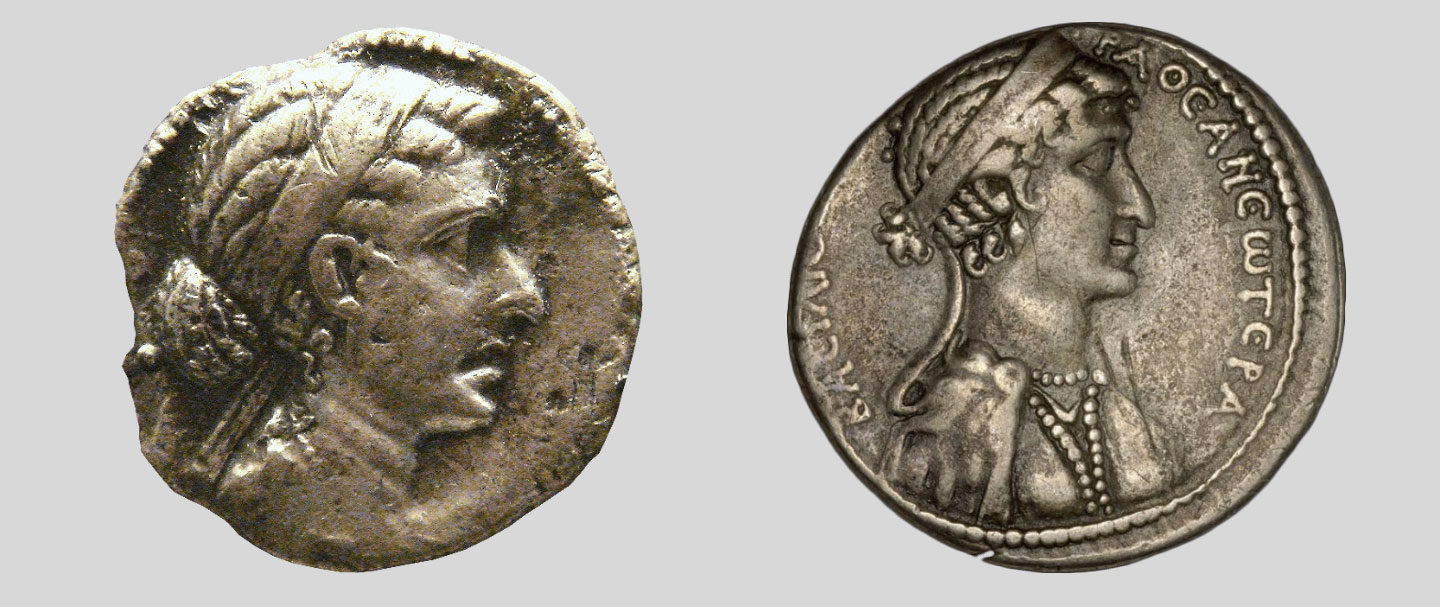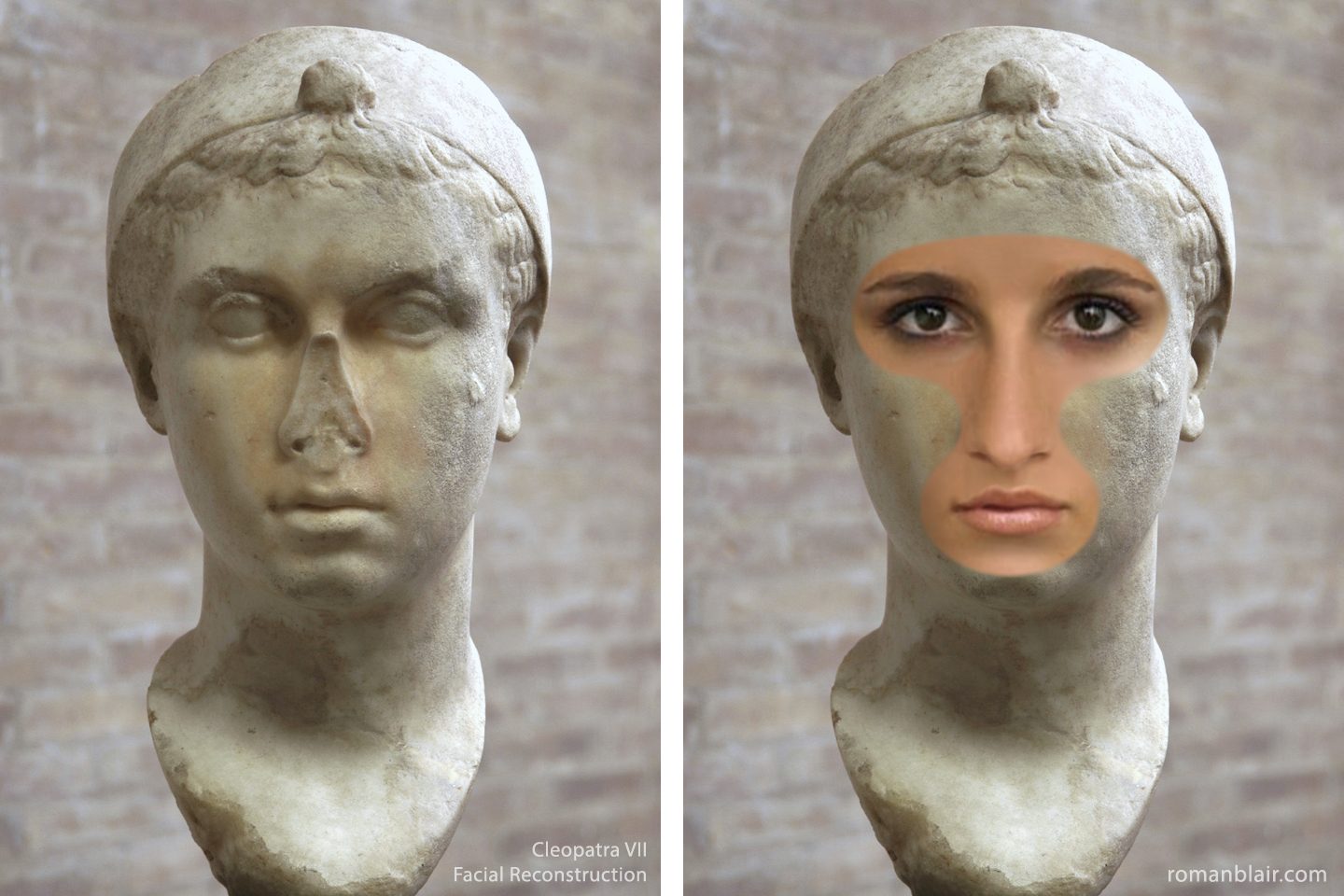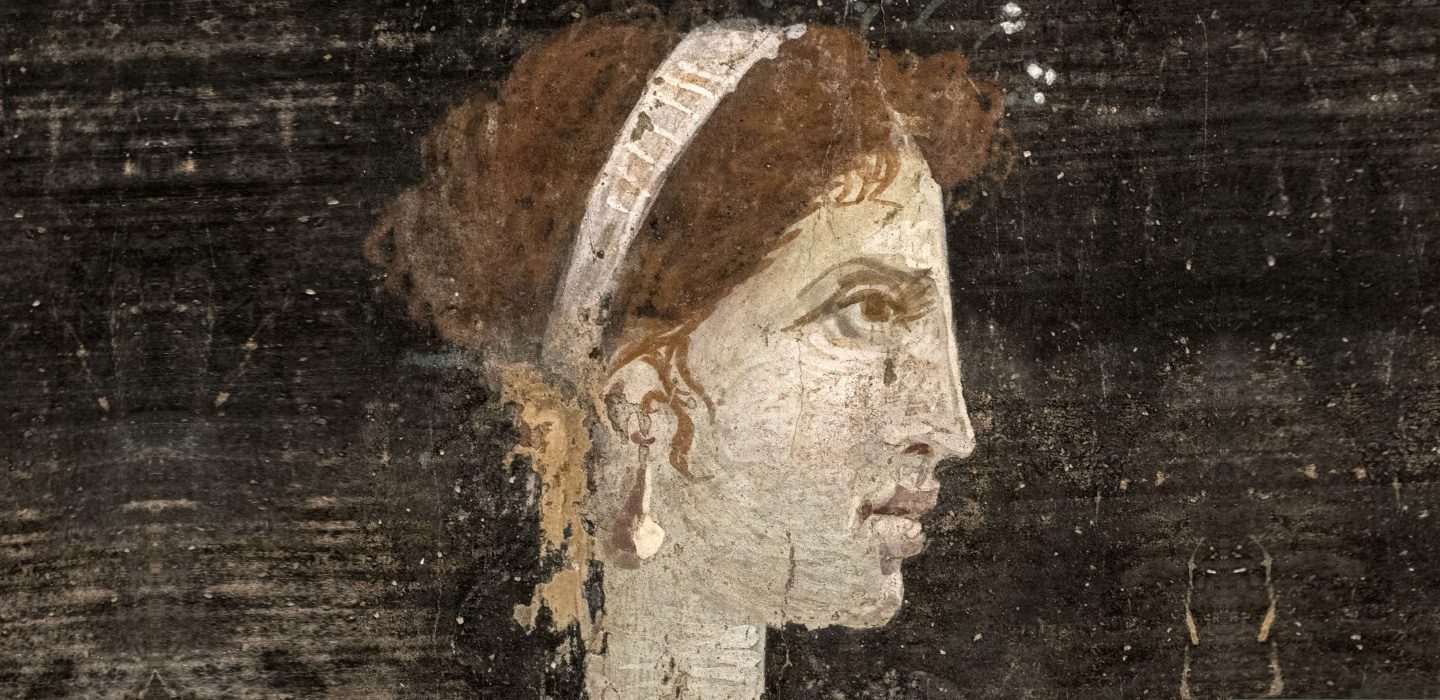
Unlike the countless marble figures of Augustus, only two busts have been identified as Cleopatra VII to date, and only one of them is complete. The complete bust (above) now resides in the Altes Museum in Berlin. It portrays the Queen with hair pulled back into a bun beneath the traditional broad diadem of the Ptolemies. The same image is reproduced in profile on coins of the time.
Cleopatra was the first female ruler to mint coinage solely in her image. Their design would have been approved by her and distributed during her reign. So it may surprise people that they are not an ideal reference for her appearance. Coins were propaganda tools and the only widely distributed icons of monarchs in ancient times. Each one had a specific message. Compare the two images below. Both coins depict Cleopatra VII but in essence show two very different people.

The left coin was minted during the early years of Cleopatra’s reign. It was designed to resemble previous Ptolemaic coins, which always had a King on the front. Cleopatra was a young new monarch and her future was far from stable. The use of a large hooked nose and dour expression connected her to the coins of her well-established ancestors. The coin on the right was struck with Marc Antony’s face on the reverse. Cleopatra’s features changed drastically to make her look more like her partner. In effect, less Greek and more Roman. Antony needed Egyptian money, but many of his generals resented the help of a foreigner, and a woman no less. This change in her appearance was most likely an effort to curb this hostility. In short, every coin she minted portrayed a different woman, depending on what she needed to gain politically at the time.

The second bust identified as Cleopatra VII (above left) was most likely carved during her stay in Rome, but it has since lost its nose and can no longer provide a full picture of her appearance. This bust now resides in the Vatican Museums. Although there are countless other statues suspected to be Cleopatra VII, they cannot be identified with certainty and many of them were carved after her death. Two frescoes of Cleopatra were discovered, one in Herculaneum (below) and one in Pompeii, but these were likewise painted after her death and are a better measure of her coloring than her facial structure. Other portrayals, like the carvings on the Temple of Hathor at Dendera, were created during her lifetime but intentionally left generic to keep with Egyptian tradition and they provide an even less accurate reference. Until new sources are discovered, the two busts provide the best example of what Queen Cleopatra looked like.
It’s interesting to note that the fresco in Herculaneum depicts Cleopatra with reddish-brown hair. The color of her hair does not survive in writing from antiquity, but Cleopatra’s ancestors had hair ranging from light to dark, including several blondes. There was very little foreign blood in her family since most of her predecessors practiced brother-sister marriage. Even Cleopatra’s grandmother, a Syrian princess, descended from the same Greek-Macedonian bloodline as the Ptolemies. The high degree of incest could have kept recessive traits (like fair hair) common in the Ptolemaic line. Thanks to Elizabeth Taylor’s portrayal of the Queen, we often associate Cleopatra with black hair (cut into a bob for some reason) when it may actually have been much lighter.

It’s ironic that a woman so famous for her appearance survived in more written accounts than physical media. But knowing what she looked like is very different from knowing how she appeared to others. We need to go back to the written sources to truly understand what her contemporaries thought of her.
Was Cleopatra beautiful?
The challenge in answering a question about beauty is that beauty is subjective to person, culture, and time. Criticizing Cleopatra’s appearance has become very popular in recent years, so I shouldn’t be surprised that this question gets asked a lot. But the debate is especially challenging because, more often than not, people judge images of Cleopatra that may not portray her actual appearance. So was Cleopatra beautiful?
There seem to be two schools of thought concerning Cleopatra’s appearance. The first is that she was rather beautiful and used her sexual appeal for political gain. This idea was very popular, even among historians, until the mid-20th century. The second vision of Cleopatra, and the one which is more popular right now, is that she was rather plain or unattractive but a brilliant strategist.
I find it a little funny to assume that she couldn’t be both beautiful and intelligent, but debate rages on. And it’s understandable why people are curious about her attractiveness. Like Helen of Troy, she has always been one history’s famous beauties. Stories, paintings, operas, movies, and countless other media have been inspired by her famous good looks. But we encounter too many obstacles with this question today. Standards of beauty differ from culture to culture and change over time. Many of the people who were considered “most beautiful” and “most handsome” 50 years ago wouldn’t even be able to compete today. That’s only a 50-year difference. Imagine what a 2,000-year difference can do. Likewise, traits considered attractive are different throughout the world.
Although the vast majority of ancient sources regarding Cleopatra were written by Romans attempting to portray her in a negative light, almost all of the documents mention that her beauty and personality were something to be admired. Cassius Dio wrote about her meeting with Caesar and described her as:
“a woman of surpassing beauty and, at the time, being in her prime, she was conspicuously lovely. She also had an elegant voice and she knew how to use her charms to be attractive to everyone.”
Plutarch is often used as a source to claim that she was not attractive, but this is incorrect. He actually stated that her beauty was not unmatched. His full quote paints a more accurate picture:
“In itself, her beauty was not absolutely without parallel, not the kind to astonish those who saw her; but her presence exerted an inevitable fascination, and her physical attractiveness, combined with the persuasive charm of her conversation and the aura she somehow projected around herself in company, did have a certain ability to stimulate others.”
Other ancient historians, particularly those who hated Cleopatra such as Propertius and Lucan, used her beauty against her. They implied that her physical attractiveness was responsible for the Roman civil wars and that it was more of a curse than a blessing. However, even these harsh critics never disputed the fact that she was beautiful.
Unlike people today, ancient historians would have had more statues and busts of Cleopatra to use as reference (they were not destroyed following her defeat). Likewise, their standards of beauty would have been similar to those of Cleopatra’s time. They lived 100-300 years after Cleopatra’s death. This gives ancient sources a much more accurate portrayal of Cleopatra with regard to her physical attractiveness. Whether or not her beauty withstood the test of time is anyone’s opinion, but the ancients considered her to be both beautiful and intelligent.